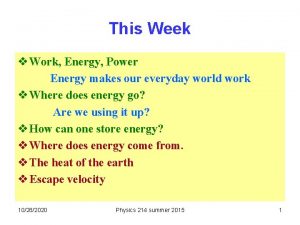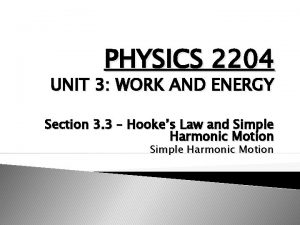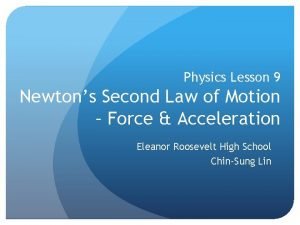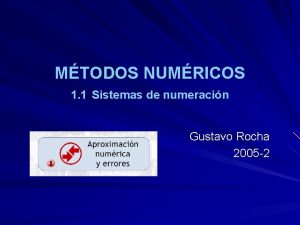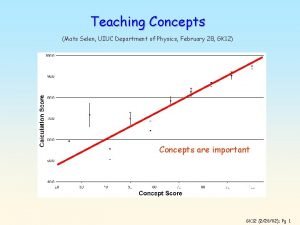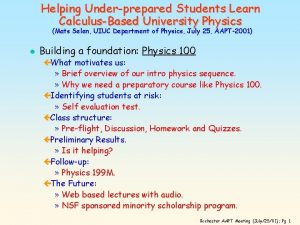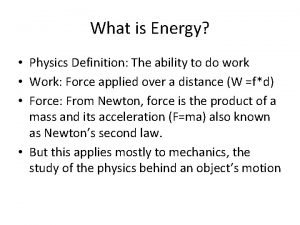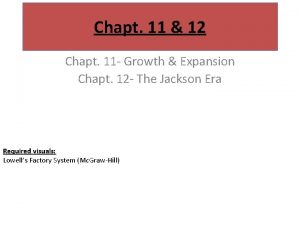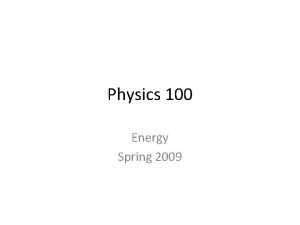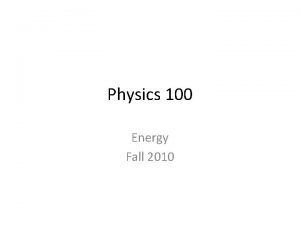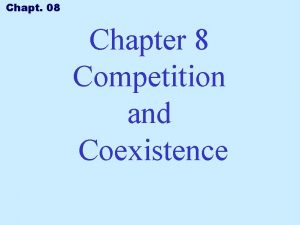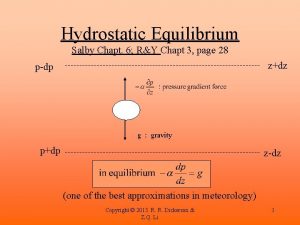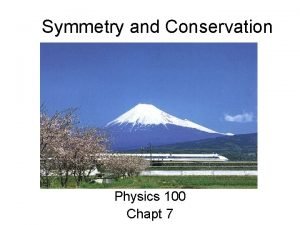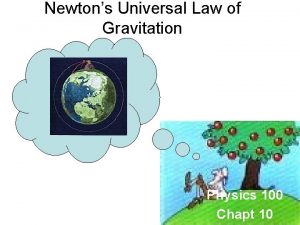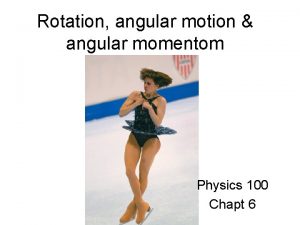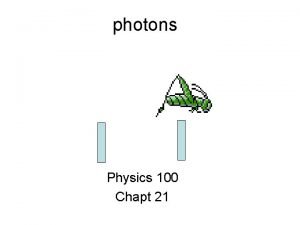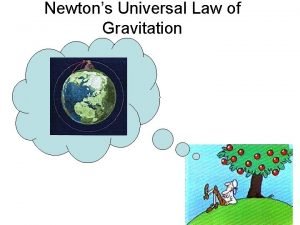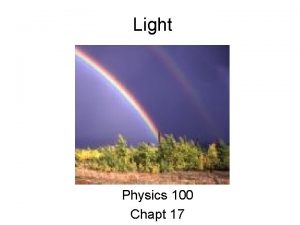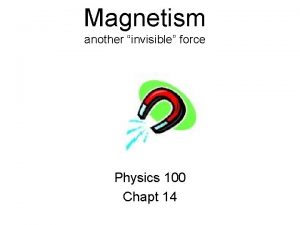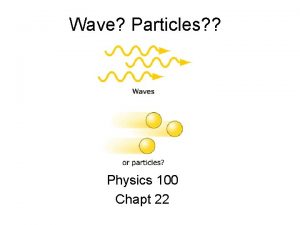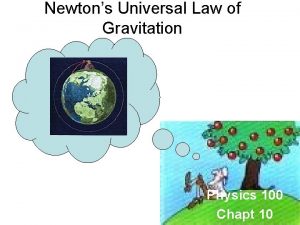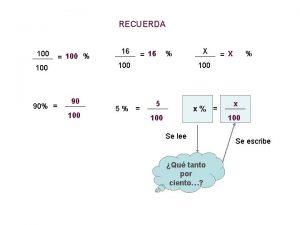Work and Energy Physics 100 Chapt 5 Physicists
































- Slides: 32

Work and Energy Physics 100 Chapt 5

Physicist’s definition of “work” dist∥ (n A s ot ca a lar ve ct or ) dist Work = F x dist∥

Atlas holds up the Earth But he doesn’t move, dist∥ = 0 Work= Fx dist∥ = 0 He doesn’t do any work!

Garcon does work when he picks up the tray but not while he carries it around the room dist is not zero, but dist∥ is 0

Why this r o t n c definition? ve atio A qu e Newton’s 2 nd law: A eq sca ua lar tio n F=m a Definition of work + a little calculus Work= change in ½mv 2 This scalar quantity is given a special name: kinetic energy

Work = change in KE This is called: the Work-Energy Theorem

Units again… Kinetic Energy = ½mv 2 work = F x dist∥ 2 m kg 2 s same! m N m =kg 2 m s =1 Joule

Work done by gravity end start dist∥ change in vertical height W=mg Work = F = x dist∥ -mg x change in height = -change in mg h

Gravitational Potential Energy Workgrav = -change in mgh This is called: “Gravitational Potential Energy” (or PEgrav) change Workgrav in = PE-change in PE grav = -Work grav

If gravity is the only force doing work…. Work-energy theorem: -change in mgh = change in ½ mv 2 0 = change in mgh + change in ½ mv 2 change in (mgh + ½ mv 2) = 0 mgh + ½ mv 2 = constant

Conservation of energy mgh + ½ mv 2 = constant Gravitational Potential energy Kinetic energy If gravity is the only force that does work: PE + KE = constant Energy is conserved

Free fall height (reminder) t = 0 s V 0 = 0 t = 1 s 80 m 75 m V 1 = 10 m/s 60 m t = 2 s V 2 = 20 m/s t = 3 s 35 m V 3 = 30 m/s t = 4 s V 4 = 40 m/s 0 m

m=1 kg free falls from 80 m t = 0 s V 0 = 0 h 0=80 m mgh 800 J ½ mv 2 sum 0 800 J 50 J 800 J t = 1 s V 1 = 10 m/s; h 1=75 m 750 J t = 2 s V 2 = 20 m/s; h 2=60 m 600 J 200 J 800 J 350 J 450 J 800 J t = 3 s V 3 = 30 m/s; h 3=35 m t = 4 s V 4 = 40 m/s; h 4=0 0 800 J

pendulum T W=mg Two forces: T and W T is always to the motion (& does no work) ┴

Pendulum conserves energy E=mghmax E=1/2 m(vmax)2

Roller coaster

Work done by a spring Relaxed Position F=0 F x I compress the spring (I do + work; spring does -work) Work done by spring = - change in ½ kx 2

Spring Potential Energy Workspring = -change in ½ kx 2 This is the: “Spring’s Potential Energy” (or PEspring) Workspring = -change in PEspring = -Workspring

If spring is the only force doing work…. Work-energy theorem: -change in ½ kx 2 = change in ½ mv 2 0 = change in ½ kx 2 + change in ½ mv 2 change in ( ½ kx 2 + ½ mv 2) = 0 ½ kx 2 + ½ mv 2 = constant

Conservation of energy springs & gravity mgh + ½ kx 2 + ½ mv 2 = constant Gravitational spring potential energy Kinetic energy If elastic force & gravity are the only force doing work: PEgrav + PEspring + KE = constant Energy is conserved

example grav PE Kinetic. E Spring PE

Two types of forces: “Conservative” forces that do + & – work “Dissipative” • Gravity • Friction • Elastic (springs, etc) • Viscosity • Electrical forces • … -work heat -work change in PE forces that only do – work (no potential energy. )

(-)Work done by friction heat

Thermal atomic motion Air solid Heat energy= KE and PE associated with the random thermal motion of atoms

Work-energy theorem (all forces) Workfric = Work done dissipative Forces (always -) change in (PE+KE) potential energy From all Conservative forces Kinetic energy -Work change in in heat energy Work -change fric = = fric -change = (PE+KE) in Heat Energy change in

Work – Energy Theorem (all forces) 0 = change in 0 = + (PE+KE) change in Heat Energy (Heat Energy+PE+KE) + PE + KE = constant Law of Conservation of Energy

Energy conversion while skiing Potential energy kinetic energy Friction: energy gets converted to heat

Units again Heat units: 1 calorie = heat energy required to raise the temp of 1 gram of H 2 O by 1 o C Kg m 2/s 2 1 calorie= 4. 18 Joules

Food Calories 1 Calorie = 1000 calories = 1 Kcalorie The Calories you read on food labels 1 Calorie= 4. 18 x 103 Joules 7 x 106 J 8 x 105 J 2 x 106 J

Power Rate of using energy: Units: Joule 1 second amout of energy Power = elapsed time = 1 Watt A 100 W light bulb consumes 100 J of electrical energy each second to produce light

Other units Over a full day, a work-horse can have an average work output of more than 750 Joules each second 1 Horsepower = 750 Watts

Kilowatt hours energy Power = time energy = power unit Elec companies use: x Kilowatts (103 W) x time unit = energy unit x hours (3600 s) 1 kilowatt-hour = 1 k. W-hr = 103 W x 3. 6 x 103 s = 3. 6 x 106 Ws J HECO charges us about 15 cents /k. W-hr
 100 100 100 100 100
100 100 100 100 100 Physics 03-06 impulse and momentum answer key
Physics 03-06 impulse and momentum answer key Szaas
Szaas Emiko's cat often meows
Emiko's cat often meows Chapter 4 section 1 work and machines answer key
Chapter 4 section 1 work and machines answer key Work energy power
Work energy power What is work energy theorem
What is work energy theorem Sound energy
Sound energy Regents physics work power energy
Regents physics work power energy Joule units
Joule units Physics 2204 unit 3: work, power, energy
Physics 2204 unit 3: work, power, energy Describing energy section 2 answers
Describing energy section 2 answers Energy energy transfer and general energy analysis
Energy energy transfer and general energy analysis Energy energy transfer and general energy analysis
Energy energy transfer and general energy analysis Box plot gcse
Box plot gcse Big data on bare metal
Big data on bare metal 120 nin yüzde 10 u kaçtır
120 nin yüzde 10 u kaçtır 200+200+100+100
200+200+100+100 Malloc lab 100/100
Malloc lab 100/100 1453-1337
1453-1337 100+100=200
100+100=200 200+100+300
200+100+300 C/100=f-32/180=k-273/100
C/100=f-32/180=k-273/100 What's 100 + 100
What's 100 + 100 300+300+200+200
300+300+200+200 1000 en números romanos
1000 en números romanos 100 200 300
100 200 300 Physics 101 uiuc
Physics 101 uiuc Physics 100 uiuc
Physics 100 uiuc Why does it happen
Why does it happen University physics with modern physics fifteenth edition
University physics with modern physics fifteenth edition Physics ia introduction
Physics ia introduction What is physics energy
What is physics energy





